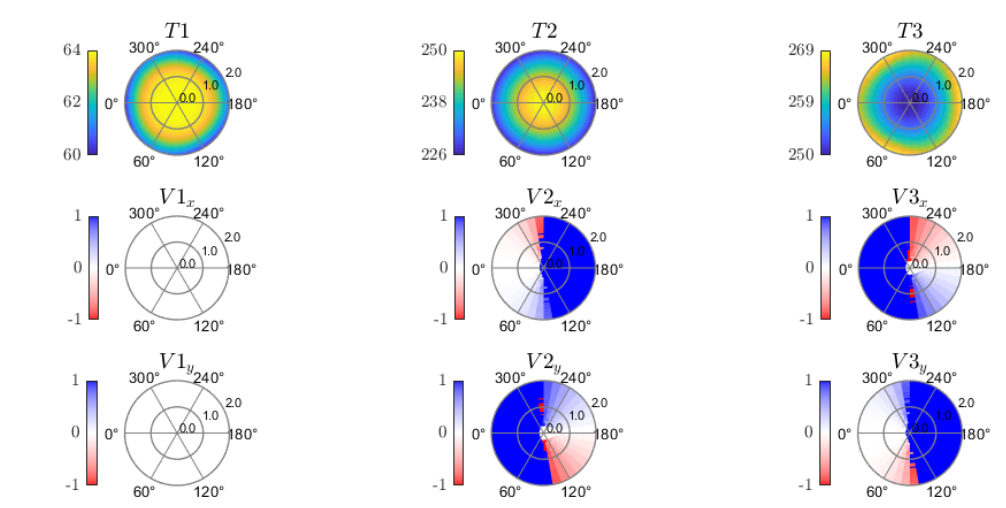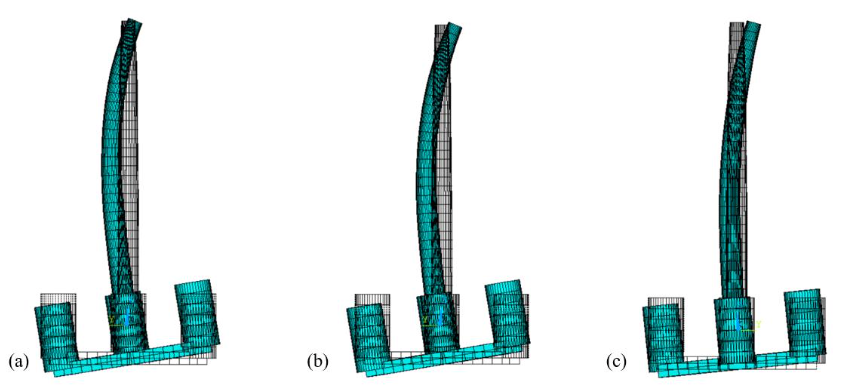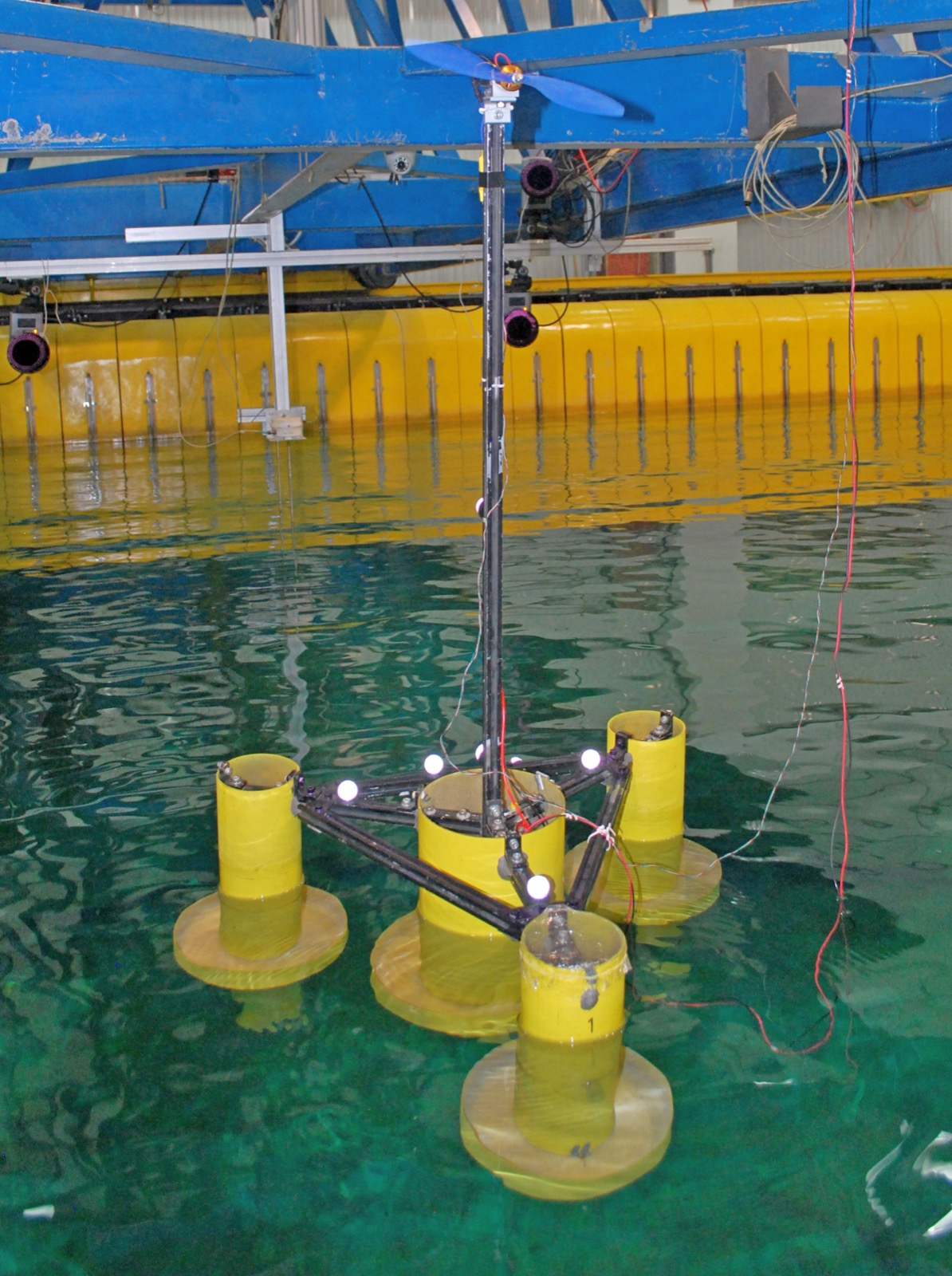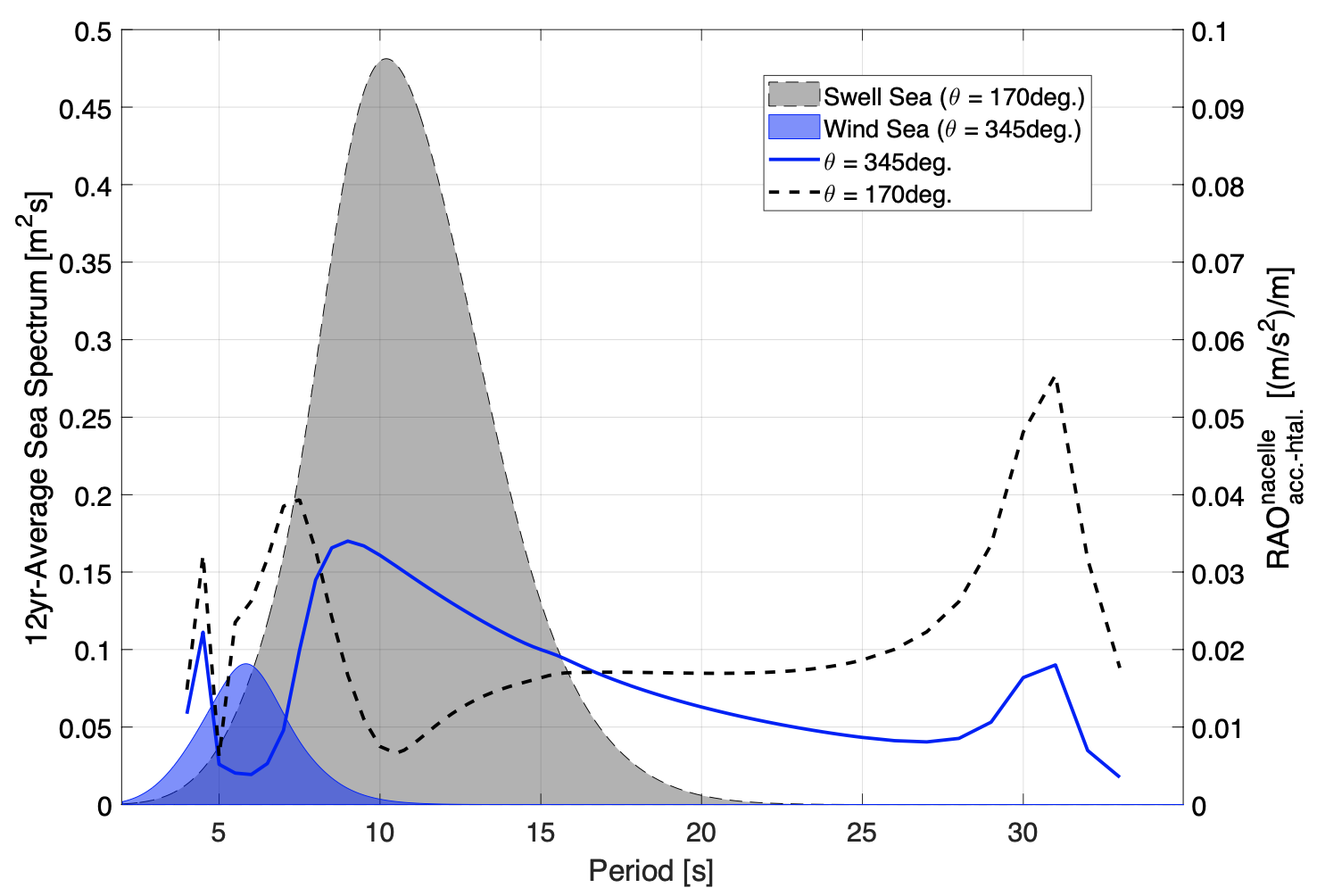
Mooring
The research group uses commercial tools and models developed in-house to assess the linear and non-linear mooring dynamics and floater-mooring coupled responses. They allow the evaluation of typical mooring line parameters (dynamic tensions, safety factor, etc.) as well as the propensity of the system to be excited by non-linear flow induced motions, such as VIM.
Structural Analysis
The structural evaluation of the FOWT is carried out using finite element methods that provide solutions for multiphysics applications. They allow to improve the design reducing the structural weight, while guaranteeing the compliance with established design criteria.


Model-scale testing
Model-scale experimental campaigns are carried out in the TPN-USP wave basin using a real-taime hybrid testing approach, which allows to apply appropriate aerodynamic/generator forces and moments based on the results of the numerical simulations and measured (real) hydrodynamic loads. This methodology solves scaling incompatibilities between the wind tubrine and floating system through real-time estimation of rotor aerodynamic forces and moments based on the platform motions, turbine model and energy generator dynamic response. This is possible thanks to an experimental set-up which combines the measured motions of the model via optical tracking system, a controller (software-on-the-loop) and a set of fans jointly developed by the TPN and the LGRid.
Numerical modelling
The dynamic behavior of the system is also evaluated using numerical models able to compute the wind-wave induced responses in frequency and time domain. For this aim, both in-house (METIS and Dynasim) and commercial software are used. Besides the high fidelity simulations, the computational tools developed by the group are able to perform low-time consuming assessments with limited loss of accuracy. This feature has advantages during early-stage design evaluations and for hull-mooring parametric optimization.

